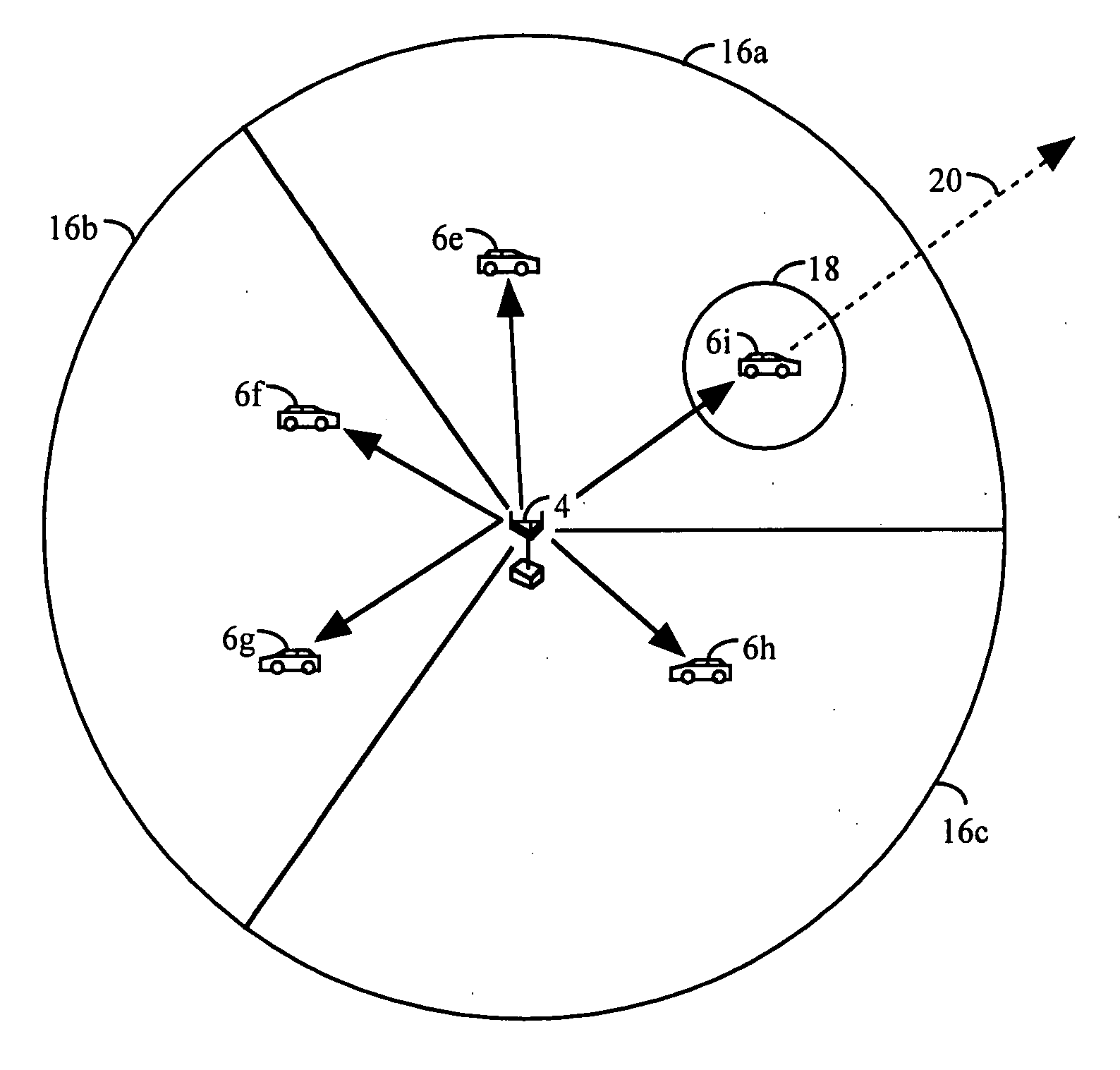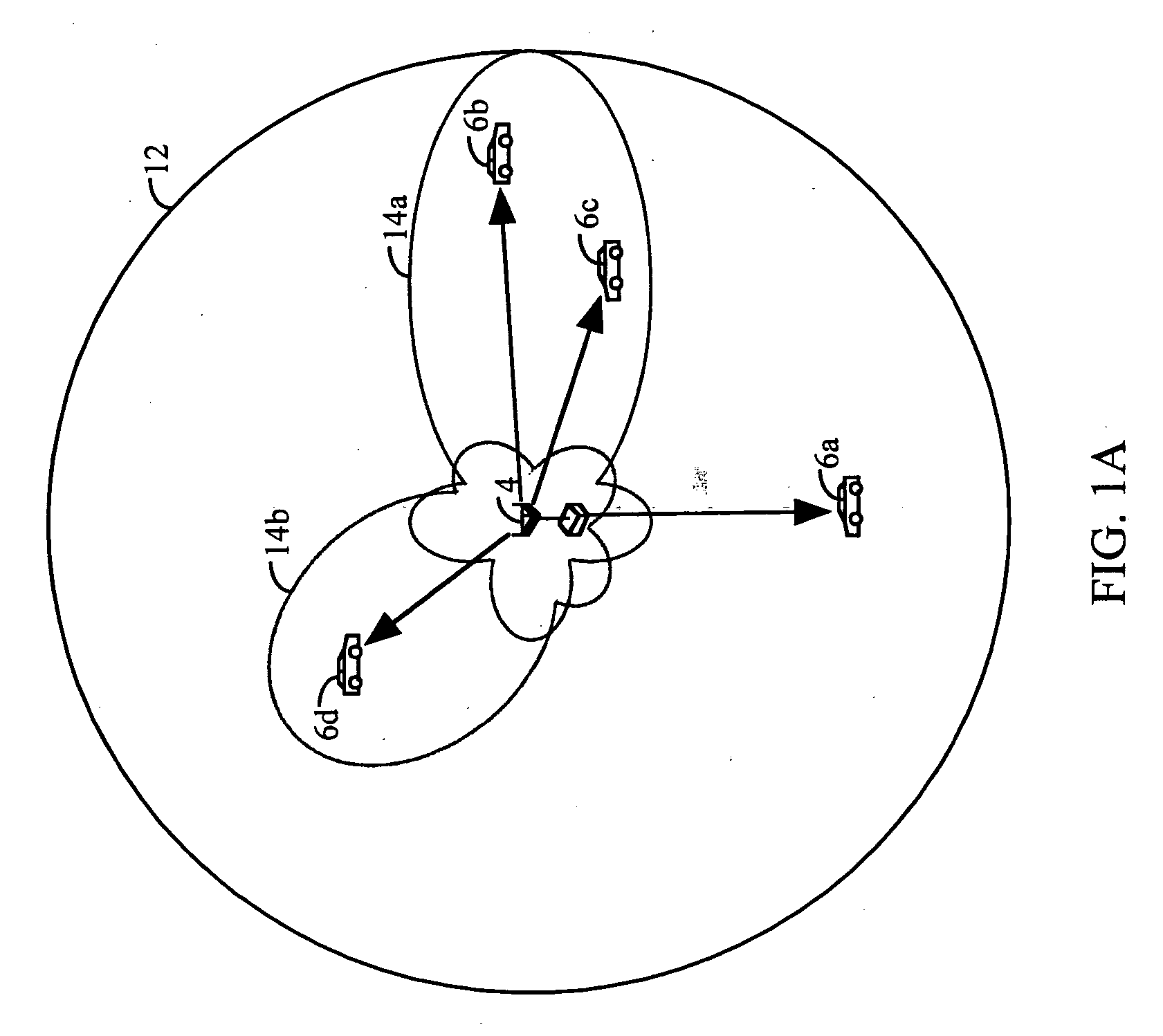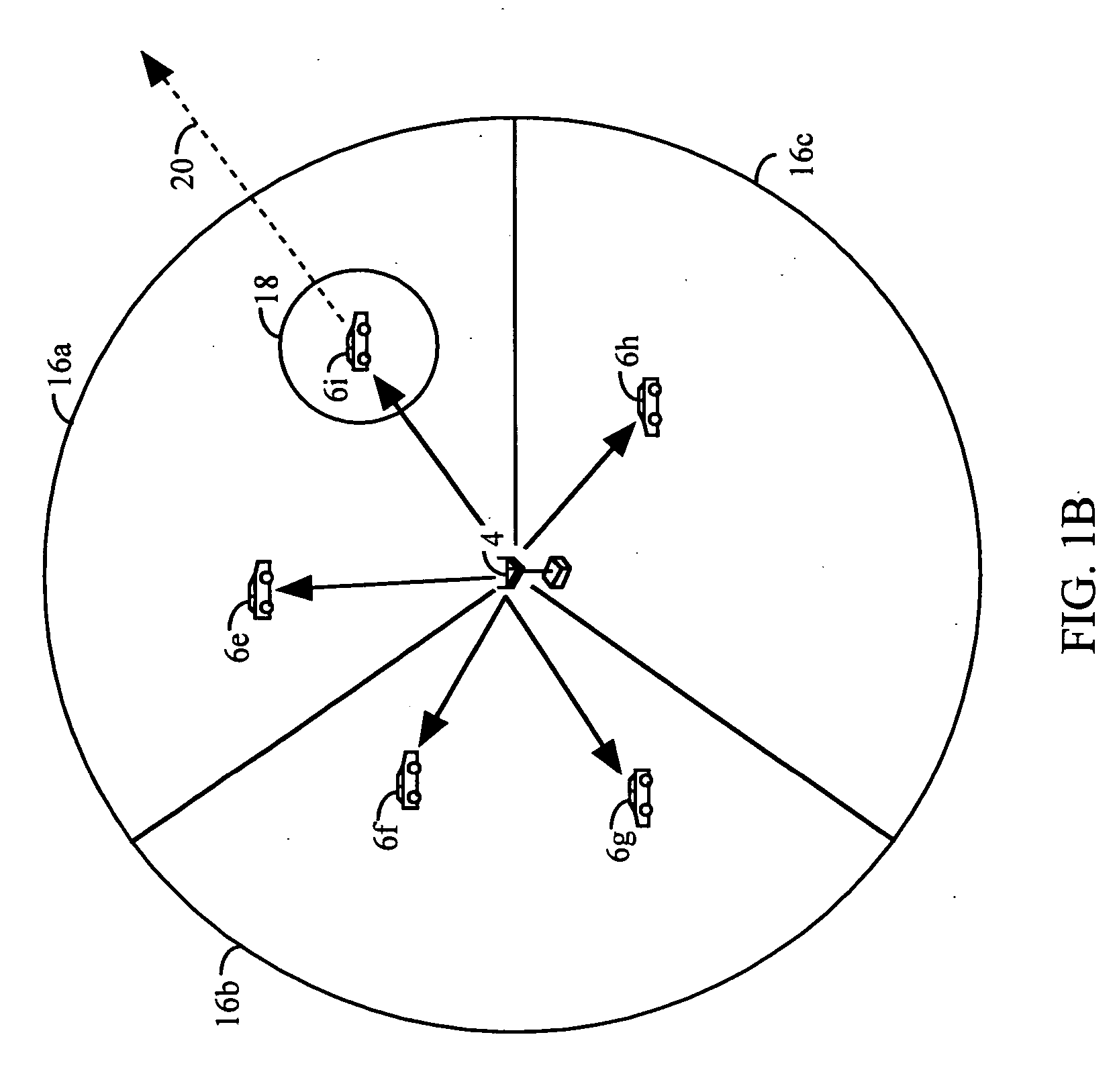Method and apparatus for providing orthogonal spot beams, sectors, and picocells
a spot beam and orthogonal technology, applied in the field of communication, can solve the problems of affecting the performance of the communication system, and spreading of signals from other sectors
- Summary
- Abstract
- Description
- Claims
- Application Information
AI Technical Summary
Benefits of technology
Problems solved by technology
Method used
Image
Examples
Embodiment Construction
[0024] The present invention is a method and apparatus for providing orthogonal spot beams, sectors, and picocells. In accordance with the IS-95 standard, the forward link comprises 64 orthogonal code channels which are generated by covering each code channel with one of 64 unique Walsh sequences. In accordance with the IS-95 standard, Walsh sequence zero is reserved for the pilot signal. To increase capacity, the forward link transmission can comprise multiple transmissions. Each transmission can be directed to a particular area by the use of directive antennas. For example, a transmission can be directed at the entire area surrounding the base station (e.g., an omni-directional transmission), a sector of a cell, or a localized area within a sector or a cell using spot beams or picocells. Spot beams provide antenna gain, minimize interference, and increase capacity. In this specification, a particularized transmission comprises a transmission covering a cell, a sector, or a picocel...
PUM
 Login to View More
Login to View More Abstract
Description
Claims
Application Information
 Login to View More
Login to View More - R&D
- Intellectual Property
- Life Sciences
- Materials
- Tech Scout
- Unparalleled Data Quality
- Higher Quality Content
- 60% Fewer Hallucinations
Browse by: Latest US Patents, China's latest patents, Technical Efficacy Thesaurus, Application Domain, Technology Topic, Popular Technical Reports.
© 2025 PatSnap. All rights reserved.Legal|Privacy policy|Modern Slavery Act Transparency Statement|Sitemap|About US| Contact US: help@patsnap.com



